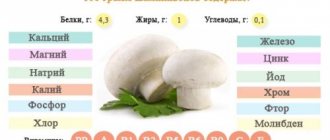To provide a person with food that corresponds to his energy expenditure and plastic processes, it is necessary to determine the daily energy expenditure. The unit of measurement for human energy is the kilocalorie.
During the day, a person spends energy on the work of internal organs (heart, digestive system, lungs, liver, kidneys, etc.), heat exchange and performing socially useful activities (work, study, housework, walks, rest). The energy expended on the functioning of internal organs and heat exchange is called basal metabolism. At an air temperature of 20 °C, complete rest, on an empty stomach, the basic metabolism is 1 kcal per 1 hour per 1 kg of human body weight. Consequently, basal metabolism depends on body weight, as well as the sex and age of a person.
The daily energy expenditure of a healthy person consists of:
1) basal metabolism,
2) work increase, i.e. energy costs associated with performing a particular job,
3) specific dynamic action of food.
Muscular work significantly changes the metabolic rate. The more intense the work performed, the higher the energy consumption. If energy expenditure under basal metabolic conditions is on average 1 kcal per 1 kg of body weight per hour, then in a quiet sitting position energy expenditure is 1.4 kcal/kg/hour, in a standing position without tension - 1.5 kcal/kg/hour , for light work (clerical workers, teachers, tailors, etc.) - 1.3-2.5 kcal/kg/hour, for light muscular work associated with walking (doctors, postmen, etc.) - 2.8- 3.2 kcal/kg/hour, for heavy physical labor - 5.0-7.5 kcal/kg/hour.
The degree of energy expenditure for various physical activities is determined by the physical activity coefficient - the ratio of the total energy expenditure for all types of activity per day to the value of the basal metabolic rate (Table 2.1).
For people doing light work while sitting, 2400-2600 kcal per day is required, while people working with muscular load need 3400-3600 kcal per day. Muscular work significantly increases energy expenditure, so daily energy expenditure exceeds the basal metabolic rate. This increase in energy costs constitutes a working increase, which is greater the more intense the muscular work. During muscular work, thermal and mechanical energy is released. The ratio of mechanical energy to the total energy spent on work, expressed as a percentage, is called the coefficient of efficiency (efficiency). During physical labor, the efficiency is on average 20%. In untrained people it is lower than in trained people.
Table 2.1 Energy costs for various types of activities per day
During mental work, energy consumption is significantly lower than during physical work. Intense mental work causes an increase in energy expenditure by 2-3% compared to complete rest. If mental activity is accompanied by emotional arousal, energy expenditure may be greater (up to 11-19%).
Table of human energy consumption for various types of activities
Do you want to know how many calories you spend working, for example, as a bartender? Or how much energy do you use when working around the house or plowing the garden?
Our table of human energy consumption will help you with this. Of course, different types of physical activity use our body’s energy differently. Accordingly, the same time spent on different types of physical activity will yield different effectiveness.
In the table below you can easily find out how many calories you burned, depending on two factors:
- type of physical activity,
- the time during which you were physically active.
Advice from Kostya Shirokaya: use the search Ctrl + F. This way you can open the search bar in your browser and enter the type of physical activity you are interested in. If the type of physical activity you have chosen is in the list, it will be highlighted in a separate color, and to the right of it will be the number of calories burned per minute.
Next, you need to calculate the number of calories burned: multiply the activity coefficient by your weight and the duration of physical activity
For example, a person weighing 80 kg in 30 minutes. intense aerobics will spend: 0.123 x 80 (kg) x 30 (min) = 295.2 calories.
PS you have no idea how many calories we spent while creating this table manually in html











